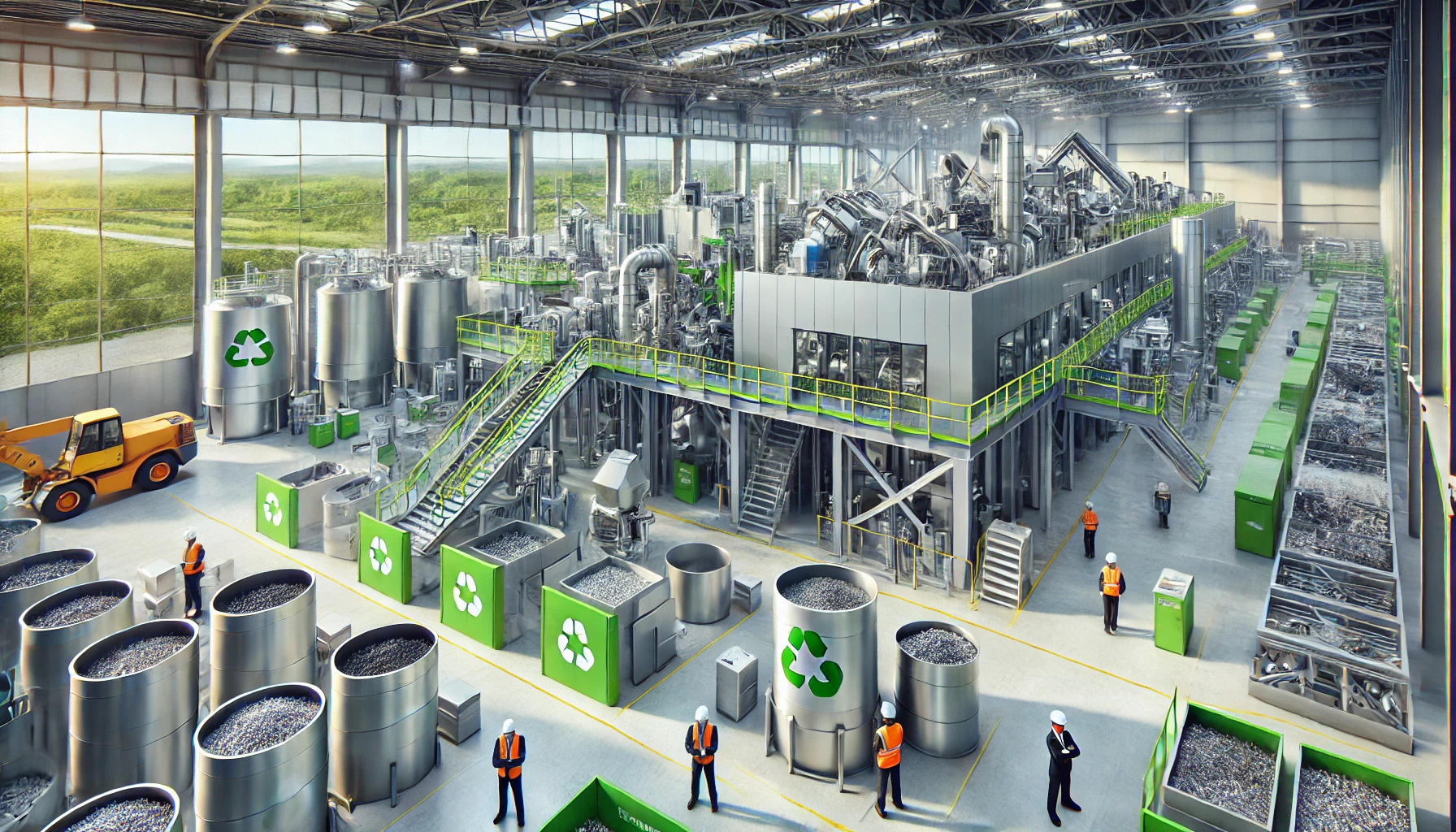Sustainable Aluminium: New Recycling Techniques for Environmental and Economic Efficiency
Recycling aluminium through advanced techniques like semi-direct and direct recycling significantly reduces energy consumption and environmental impact compared to conventional methods. This review highlights the importance of adopting sustainable recycling practices to enhance the aluminium industry's environmental and economic benefits.

Recycling aluminium is a crucial aspect of sustainable development, offering significant environmental, energy, and cost benefits. Researchers from institutions like Universiti Tun Hussein Onn Malaysia, Alfaisal University, Imperial College London, University of Dundee, and Universiti Teknikal Malaysia Melaka have conducted a comprehensive review examining various aluminium recycling techniques, including conventional recycling (CR), semi-direct recycling (SDR), and direct recycling (DR), emphasizing their potential to enhance sustainability in the manufacturing sector.
Conventional Recycling: High Energy, High Impact
Conventional recycling involves melting aluminium scrap to produce secondary ingots, which are then processed into final products. Despite its widespread use, this method has high energy consumption and significant metal loss due to oxidation and slag formation during melting. The high temperatures required for melting, often exceeding 1,000 K, also result in substantial energy use and emissions, posing challenges for sustainable practices. Additionally, the process involves multiple steps such as cleaning, drying, and compacting the aluminium chips before melting, each contributing to the overall environmental impact.
Innovative Approaches: Semi-Direct Recycling
Semi-direct recycling combines conventional methods with additional steps like powder metallurgy, hot extrusion, and spark plasma sintering, which operate under solid-state conditions. These techniques reduce energy consumption and improve material recovery. Powder metallurgy, for instance, involves mixing and compacting aluminium powders before sintering them at high temperatures. This method allows for the production of near-net-shaped products with properties comparable to those made through traditional methods, often requiring minimal or no secondary machining. Hot extrusion, another SDR method, combines high pressure and temperature to join aluminium chips, achieving a 95% recovery rate with only 5-6% of the energy required by conventional methods. This process involves using ball mills, pre-heating, and cold compaction to produce billets, which are then extruded to form new products. Spark plasma sintering uses pulsed DC current to compact and sinter aluminium chips rapidly, enhancing their mechanical properties. This method stands out due to its rapid heating rate, enabling quick sintering and the production of near-net-shape parts.
Direct Recycling: Simplifying the Process
Direct recycling, a novel approach, simplifies the recycling process by directly converting aluminium chips into final products through techniques like cold forging, hot forging, and compressive torsion. Cold forging involves compressing aluminium chips at room temperature, resulting in high-density, compact materials with improved mechanical properties. Hot forging requires high temperatures to achieve plastic deformation, allowing for the production of complex shapes with enhanced material properties. Compressive torsion applies simultaneous compressive and shear forces to aluminium chips, effectively consolidating them into dense, compact materials without changing their cylindrical shape. This method offers the advantage of severe plastic deformation without the need for melting, significantly reducing energy consumption and emissions.
Environmental Impact: The Life Cycle Assessment
Life cycle assessment (LCA) studies of these recycling methods reveal that aluminium recycling offers superior environmental solutions compared to landfilling and incineration. Recycling aluminium consumes only 5% of the energy required for primary production and reduces carbon dioxide emissions significantly. The environmental benefits are further underscored by the reduction in metal losses and the avoidance of hazardous byproducts such as salt slag and particulate matter emissions. Additionally, aluminium's high recyclability and economic value make it a preferred material for recycling initiatives. LCA studies highlight that recycling, particularly through SDR and DR methods, leads to lower environmental impacts across various indicators, including energy consumption, greenhouse gas emissions, and resource use.
Towards a Sustainable Future
This extensive review underscores the importance of adopting advanced recycling technologies to enhance sustainability in the aluminium industry. By optimizing recycling processes, reducing energy consumption, and minimizing environmental impact, these methods contribute to a more sustainable manufacturing sector and promote the conservation of natural resources. The findings suggest that focusing on solid-state recycling techniques like SDR and DR can provide substantial environmental and economic benefits, positioning them as viable alternatives to conventional recycling methods. As the demand for aluminium continues to grow, driven by its advantageous properties such as corrosion resistance, high strength, and low density, the adoption of sustainable recycling practices becomes increasingly critical. This review provides valuable insights for policymakers, industry stakeholders, and researchers, advocating for the integration of these advanced recycling methods into broader waste management and resource conservation strategies, ultimately contributing to global sustainability goals.
- FIRST PUBLISHED IN:
- Devdiscourse










